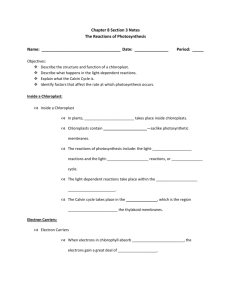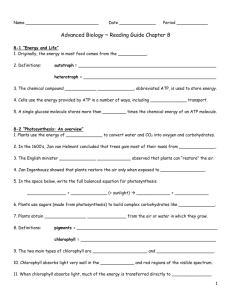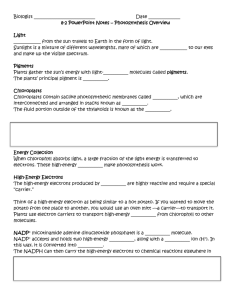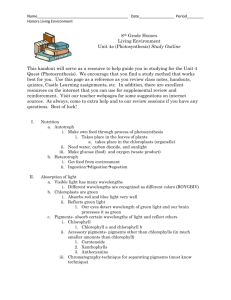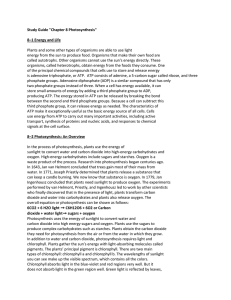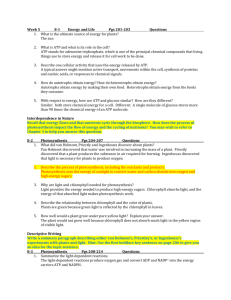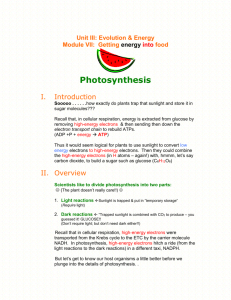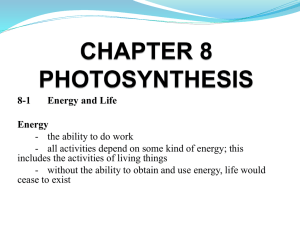Chapter 8, Section 1 pg
advertisement
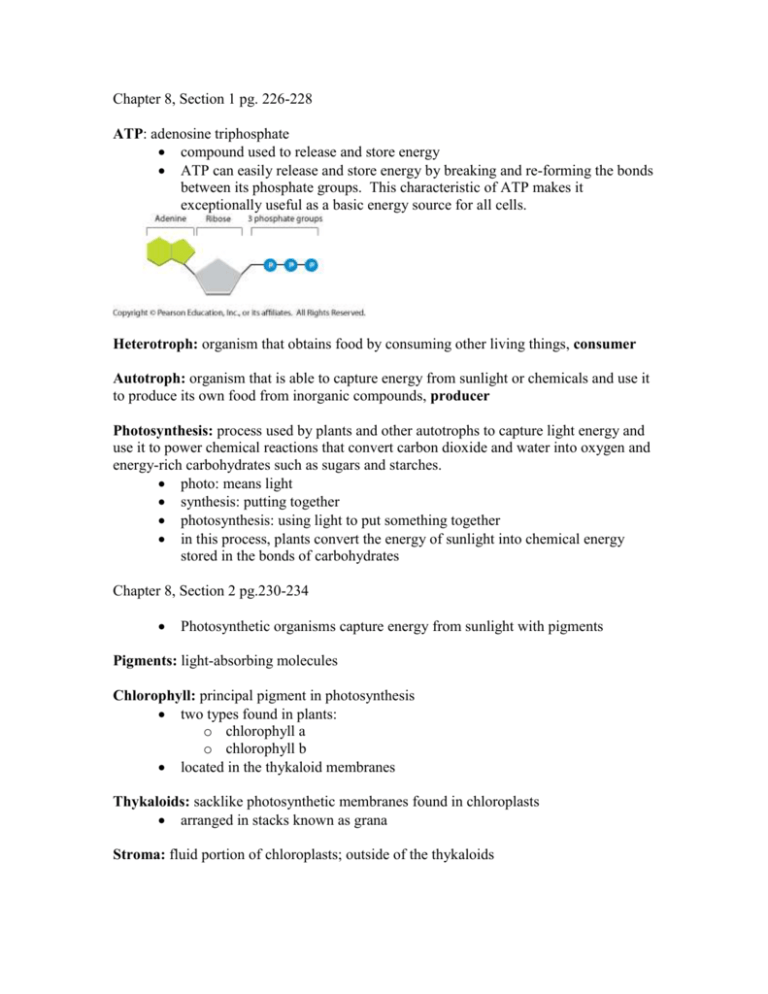
Chapter 8, Section 1 pg. 226-228 ATP: adenosine triphosphate compound used to release and store energy ATP can easily release and store energy by breaking and re-forming the bonds between its phosphate groups. This characteristic of ATP makes it exceptionally useful as a basic energy source for all cells. Heterotroph: organism that obtains food by consuming other living things, consumer Autotroph: organism that is able to capture energy from sunlight or chemicals and use it to produce its own food from inorganic compounds, producer Photosynthesis: process used by plants and other autotrophs to capture light energy and use it to power chemical reactions that convert carbon dioxide and water into oxygen and energy-rich carbohydrates such as sugars and starches. photo: means light synthesis: putting together photosynthesis: using light to put something together in this process, plants convert the energy of sunlight into chemical energy stored in the bonds of carbohydrates Chapter 8, Section 2 pg.230-234 Photosynthetic organisms capture energy from sunlight with pigments Pigments: light-absorbing molecules Chlorophyll: principal pigment in photosynthesis two types found in plants: o chlorophyll a o chlorophyll b located in the thykaloid membranes Thykaloids: sacklike photosynthetic membranes found in chloroplasts arranged in stacks known as grana Stroma: fluid portion of chloroplasts; outside of the thykaloids An electron carrier is a compound that can accept a pair of high-energy electrons and transfer them, along with most of their energy, to another molecule NADP+: One of these carriers ^^ transfers high-energy electrons from chlorophyll to make other molecules NADP+ accepts & holds 2 high-energy electrons & a hydrogen ion NADPH (traps sunlight in chemical form) carries high-energy electrons to chemical reactions elsewhere **helps to build a variety of molecules the cell needs ex. glucose, carbs. Photosynthesis uses the energy of sunlight to convert water and carbondioxide (reactants) into high-energy sugars and oxygen (products). Photosynthesis: Carbon dioxide + water light sugars + oxygen Light-dependent reactions: set of reactions in photosynthesis that use energy from light to produce ATP and NADPH- occur in the thykaloids of choloplasts Light-independent reactions: set of reactions in photosynthesis that does not require light Chapter 8, section 3 pg.235-241 The light dependent reactions use energy from sunlight to produce oxygen and convert ADP and NADP+ into the carriers ATP and NADPH Photosystems: cluster of chlorophyll and proteins found in thykaloids absorb sunlight and generate high-energy electrons Electron transport chain: series of electron carrier proteins that shuttle high-energy electrons during ATP-generating reactions ATP synthase: cluster of proteins that span the cell membrane and allow hydrogen atoms to pass through it Calvin Cycle: light-independent reactions of photosynthesis in which energy from ATP and NADPH is used to build high-energy compounds such as sugar Among the most important factors that affect photosynthesis are temperature, light intensity, and the availability of water
